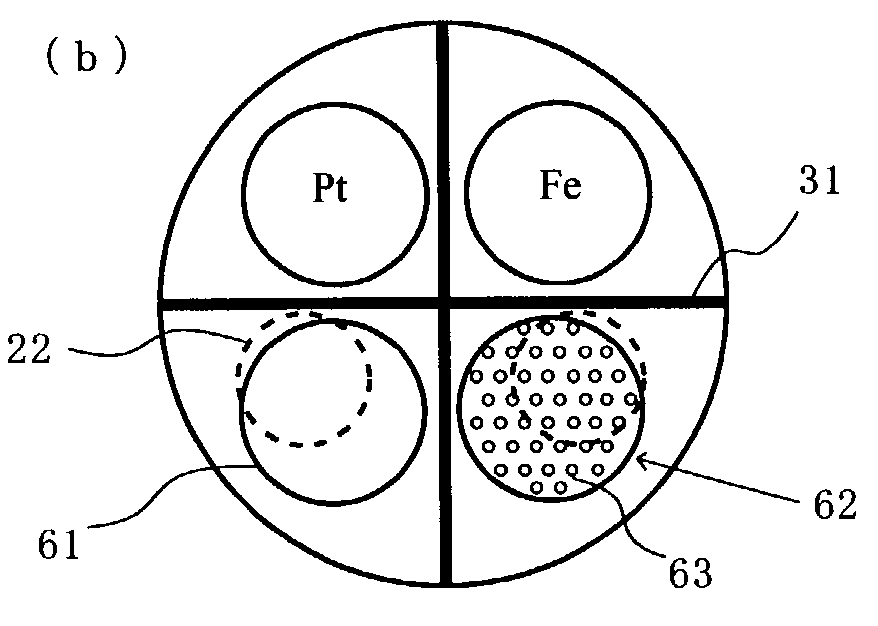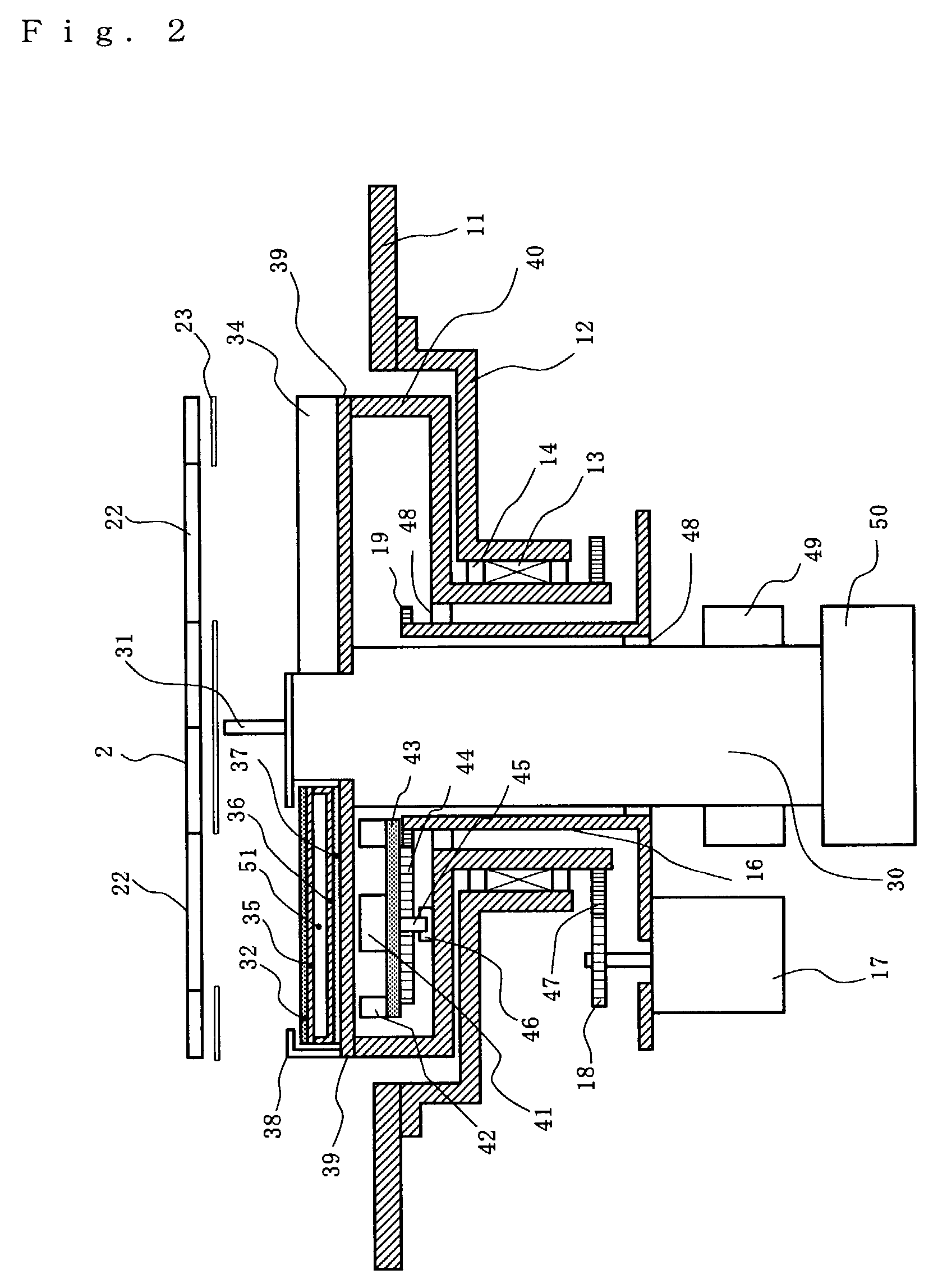Sputtering apparatus and film forming method
a technology of sputtering apparatus and film forming method, which is applied in the direction of vacuum evaporation coating, electrolysis components, coatings, etc., can solve the problems of deteriorating magnetic characteristics, inability to obtain desired magnetic characteristics, and limitation of longitudinal magnetic recording density
- Summary
- Abstract
- Description
- Claims
- Application Information
AI Technical Summary
Benefits of technology
Problems solved by technology
Method used
Image
Examples
first embodiment
[0036]this invention refers to a sputtering chamber shown in FIGS. 1 and 2 which is used for the formation of a Co / Pd magnetic multilayer film of perpendicular magnetic recording medium shown in FIG. 5 (a). FIG. 1(a) is a schematic cross-sectional view showing a sputtering chamber, seen from the substrate transportation direction. As shown in the drawing, a rotation cathode unit 3 is rotatably installed on each of two sidewalls of the sputtering chamber 1 to cause electric discharge on both sides of a carrier 2 which holding two substrates. Thus, the multilayer film can be simultaneously formed on both sides of substrate.
[0037]The substrate 22 is supported with, for example, three support clicks 21 on carrier 2. The carrier is transported to process chambers by the well-known transportation mechanism as is shown in FIG. 1 (b). The transportation mechanism using, for example, a magnetic coupling disclosed in JP10-159934A is preferably employed. This transportation mechanism is compos...
second embodiment
[0051]As this invention, the sputtering chambers are explained, which are used for the formation of underlying and soft magnetic layers (Ti / FeTaC / Ti), and recording layers (Fe / Pt) of magnetic medium shown in FIG. 5(b).
[0052]The underlying and soft-magnetic layer forming chamber and the magnetic recording layer forming chamber are nearly the same as that shown in FIGS. 1 and 2, except for the configuration of target and processing mechanism of the rotation cathode unit. The rotation cathode units of the underlying and soft-magnetic layer forming chamber and the magnetic recording layer forming chamber are shown in FIGS. 3(a) and (b), respectively.
[0053]A Ti target for forming underlying layer, a FeTaC target for forming soft magnetic layer (under layer) to shunt the magnetic field from magnetic recording layers, and heat treatment mechanism 61 are attached on the rotation cathode unit of the underlying and soft-magnetic layer forming chamber.
[0054]An ion irradiation mechanism 62 for ...
third embodiment
[0060]Next, this invention is shown in FIG. 4.
[0061]FIG. 4 is a schematic view showing a sputtering chamber preferably used for forming a TMR (Tunneling magnetoresistive) film of the non-volatile magnetoresistive random access memory (MRAM) using the magneto-resistance effect.
[0062]As shown in FIG. 5(c), a multilayer TMR film is composed of ferri-type pinned layers of CoFe / Ru / CoFe, free layers of NiFe / CoFe, and a barrier (insulator) layer of Al2O3 or the like sandwiched between them. The surface uniformity of lower layer (CoFe) greatly influences the barrier characteristics because the barrier layer is so thin as 1–1.5 nm. That is, the cleanness and uniformity of the lower layer surface is very important.
[0063]In the sputtering chamber shown in FIG. 4(a), the film formation is started when the center of the substrate 22 attached on carrier 2 comes to the position of the rotation cathode unit center. In the case where the film formation is made after the center of substrate 22 is mad...
PUM
| Property | Measurement | Unit |
|---|---|---|
| temperature | aaaaa | aaaaa |
| temperature | aaaaa | aaaaa |
| temperature | aaaaa | aaaaa |
Abstract
Description
Claims
Application Information
 Login to View More
Login to View More - R&D
- Intellectual Property
- Life Sciences
- Materials
- Tech Scout
- Unparalleled Data Quality
- Higher Quality Content
- 60% Fewer Hallucinations
Browse by: Latest US Patents, China's latest patents, Technical Efficacy Thesaurus, Application Domain, Technology Topic, Popular Technical Reports.
© 2025 PatSnap. All rights reserved.Legal|Privacy policy|Modern Slavery Act Transparency Statement|Sitemap|About US| Contact US: help@patsnap.com



